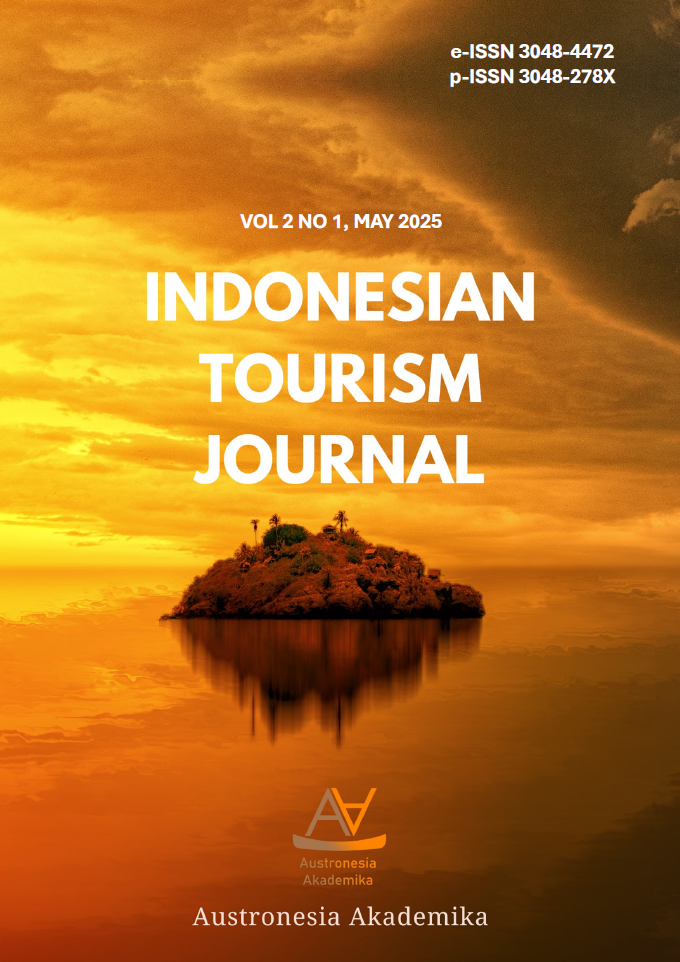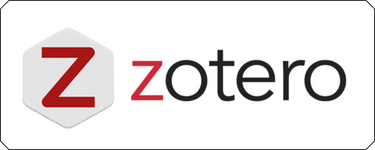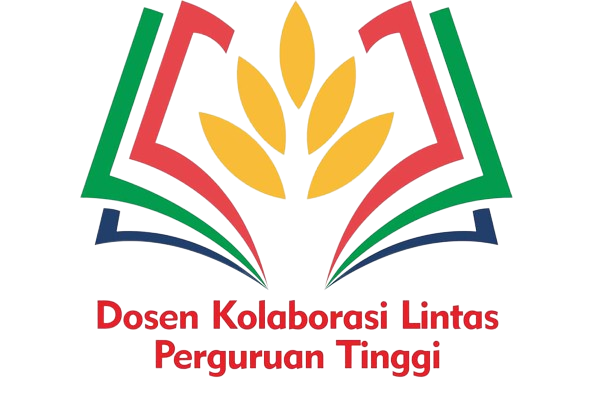An Analysis of the Effectiveness of Social Media as a Promotional Tool for Perlang Tourism Village
DOI:
https://doi.org/10.69812/itj.v2i1.109Keywords:
Social Media, Rural Tourism, Digital MarketingAbstract
Rural tourism villages in Indonesia face increasing challenges in gaining visibility in the competitive digital tourism landscape, despite their rich cultural and natural assets. Perlang Tourism Village in Central Bangka Regency exemplifies this issue, as its promotional efforts via digital platforms remain fragmented and underdeveloped. This study investigates the effectiveness of social media as a promotional tool for Perlang, aiming to assess how visual storytelling, user-generated content (UGC), and platform-specific strategies influence destination branding and tourist engagement. Employing a qualitative case study approach, the research utilizes secondary data including social media metrics, tourism reports, and literature on digital promotion. The analysis reveals that while Instagram, YouTube, and TikTok present unique opportunities, their current usage by Perlang lacks coherence, regularity, and platform optimization. Instagram posts are sporadic and visually inconsistent, YouTube is inactive, and TikTok lacks an official presence despite growing organic content under the #Perlang tag. Moreover, the absence of influencer partnerships and structured UGC campaigns undermines Perlang’s potential to build trust and emotional connections with prospective tourists. The findings emphasize that effective rural tourism promotion requires a participatory and strategic digital approach incorporating targeted content, demographic segmentation, and emotionally resonant narratives. In conclusion, this research highlights the transformative potential of integrated social media strategies in enhancing the digital visibility of rural tourism destinations and recommends the adoption of community-driven storytelling and influencer collaborations to establish a compelling and competitive online identity for Perlang Village.
Downloads
References
Abbasi, A. Z., Tsiotsou, R. H., Hussain, K., Rather, R. A., & Ting, D. H. (2023). Investigating the impact of social media images’ value, consumer engagement, and involvement on eWOM of a tourism destination: A transmittal mediation approach. Journal of Retailing and Consumer Services, 71, 103231. https://doi.org/10.1016/J.JRETCONSER.2022.103231
Aboalganam, K. M., AlFraihat, S. F., & Tarabieh, S. (2025). The Impact of User-Generated Content on Tourist Visit Intentions: The Mediating Role of Destination Imagery. Administrative Sciences, 15(4), 117. https://doi.org/10.3390/ADMSCI15040117
Ali, T., Marc, B., Omar, B., Soulaimane, K., & Larbi, S. (2021). Exploring destination’s negative e-reputation using aspect based sentiment analysis approach: Case of Marrakech destination on TripAdvisor. Tourism Management Perspectives, 40, 100892. https://doi.org/10.1016/J.TMP.2021.100892
Almansour, M. (2025). Understanding the associations between social media marketing and green outcomes: A study of employee green behavior. Technology in Society, 82, 102938. https://doi.org/10.1016/J.TECHSOC.2025.102938
Armutcu, B., Tan, A., Amponsah, M., Parida, S., & Ramkissoon, H. (2023). Tourist behaviour: The role of digital marketing and social media. Acta Psychologica, 240, 104025. https://doi.org/10.1016/J.ACTPSY.2023.104025
Blanco-Moreno, S., González-Fernández, A. M., Muñoz-Gallego, P. A., & Casaló, L. V. (2024). Understanding engagement with Instagram posts about tourism destinations. Journal of Destination Marketing & Management, 34, 100948. https://doi.org/10.1016/J.JDMM.2024.100948
Buhalis, D., & Law, R. (2008). Progress in information technology and tourism management: 20 years on and 10 years after the Internet—The state of eTourism research. Tourism Management, 29(4), 609–623. https://doi.org/10.1016/J.TOURMAN.2008.01.005
Costa, J., & Honorina, L. (2023). A study of tourist’s motivation, intention and willingness to pay premium for ecotourism. Turizam, 27(2), 136–147. https://doi.org/10.5937/TURIZAM27-40649
Denzin, N. K. (2017). The Research Act: A Theoretical Introduction to Sociological Methods. The Research Act: A Theoretical Introduction to Sociological Methods, 1–368. https://doi.org/10.4324/9781315134543/RESEARCH-ACT-NORMAN-DENZIN/RIGHTS-AND-PERMISSIONS
Elshaer, I. A., Azazz, A. M. S., & Fayyad, S. (2024). Residents’ Environmentally Responsible Behavior and Tourists’ Sustainable Use of Cultural Heritage: Mediation of Destination Identification and Self-Congruity as a Moderator. Heritage, 7(3), 1174–1187. https://doi.org/10.3390/HERITAGE7030056
Fatanti, M. N., & Suyadnya, I. W. (2015). Beyond User Gaze: How Instagram Creates Tourism Destination Brand? Procedia - Social and Behavioral Sciences, 211, 1089–1095. https://doi.org/10.1016/J.SBSPRO.2015.11.145
Flick, U. (2022). An Introduction to Qualitative Research. SAGE Publications.
Gan, J., Shi, S., Filieri, R., & Leung, W. K. S. (2023). Short video marketing and travel intentions: The interplay between visual perspective, visual content, and narration appeal. Tourism Management, 99, 104795. https://doi.org/10.1016/J.TOURMAN.2023.104795
Gan, L., Wen, Q., Lev, B., & Jiang, W. (2023). Tourism ecological security evaluation based on dynamic super-efficiency network SBM from the perspective of all-for-one tourism. Journal of Cleaner Production, 429. https://doi.org/10.1016/j.jclepro.2023.139333
Giglio, S., Bertacchini, F., Bilotta, E., & Pantano, P. (2019). Using social media to identify tourism attractiveness in six Italian cities. Tourism Management, 72, 306–312. https://doi.org/10.1016/J.TOURMAN.2018.12.007
González-Ramiro, A., Gonçalves, G., Sánchez-Ríos, A., & Jeong, J. S. (2016). Using a VGI and GIS-based multicriteria approach for assessing the potential of rural tourism in Extremadura (Spain). Sustainability (Switzerland), 8(11). https://doi.org/10.3390/SU8111144
Guttentag, D. A. (2010). Virtual reality: Applications and implications for tourism. Tourism Management, 31(5), 637–651. https://doi.org/10.1016/j.tourman.2009.07.003
Han, L., Mingying, H., & Peng, Z. (2025). The influence of social media marketing on the quality of hotel services and the behavioral intentions of tourists. Acta Psychologica, 255, 104881. https://doi.org/10.1016/J.ACTPSY.2025.104881
Holowack, D. (2023). The Ultimate Guide to User-Generated Content for Travel & Tourism Brands - CrowdRiff. Crowdriff.Com. https://crowdriff.com/resources/ultimate-guide-to-ugc-for-travel-tourism-brands/
Hussain, K., Didarul Alam, M. M., Malik, A., Tarhini, A., & Al Balushi, M. K. (2024). From likes to luggage: The role of social media content in attracting tourists. Heliyon, 10(19), e38914. https://doi.org/10.1016/J.HELIYON.2024.E38914
Johnston, M. P. (2014). Secondary Data Analysis: A Method of which the Time Has Come. Qualitative and Quantitative Methods in Libraries, 3(3), 619–626. https://www.qqml-journal.net/index.php/qqml/article/view/169
Kavoura, A., & Stavrianea, A. (2014). Economic and Social Aspects from Social Media’s Implementation as a Strategic Innovative Marketing Tool in the Tourism Industry. Procedia Economics and Finance, 14, 303–312. https://doi.org/10.1016/S2212-5671(14)00717-5
Ketterer, S., Dionysiou, D., Eierle, B., & Tsalavoutas, I. (2023). Validating implied cost of capital with realized returns by using alternative measures of cash-flow news. British Accounting Review, 55(6). https://doi.org/10.1016/j.bar.2023.101220
Kim, S. E., Lee, K. Y., Shin, S. Il, & Yang, S. B. (2017). Effects of tourism information quality in social media on destination image formation: The case of Sina Weibo. Information & Management, 54(6), 687–702. https://doi.org/10.1016/J.IM.2017.02.009
Lapuz, M. C. M. (2023). The role of local community empowerment in the digital transformation of rural tourism development in the Philippines. Technology in Society, 74, 102308. https://doi.org/10.1016/J.TECHSOC.2023.102308
Li, D., Xu, D., Zhou, Y., Lv, L., & Chen, X. (2024). Sustainable rural development through slow tourism images: A case study of Gaochun International Cittàslow in China. Journal of Destination Marketing & Management, 32, 100903. https://doi.org/10.1016/J.JDMM.2024.100903
Li, J., Bai, Y., & Alatalo, J. M. (2020). Impacts of rural tourism-driven land use change on ecosystems services provision in Erhai Lake Basin, China. Ecosystem Services, 42. https://doi.org/10.1016/J.ECOSER.2020.101081
Li, X., Ma, S. (David), & Wu, M. (2023). What makes social media branding more effective in shaping pre-visit image: Information quality or source credibility? Tourism Management Perspectives, 46, 101084. https://doi.org/10.1016/J.TMP.2023.101084
Liu, J., Wang, C., & Zhang, T. (Christina). (2024). Exploring social media affordances in tourist destination image formation: A study on China’s rural tourism destination. Tourism Management, 101, 104843. https://doi.org/10.1016/J.TOURMAN.2023.104843
Liu, Y., Zhang, R., & Yao, Y. (2021). How tourist power in social media affects tourism market regulation after unethical incidents: Evidence from China. Annals of Tourism Research, 91, 103296. https://doi.org/10.1016/J.ANNALS.2021.103296
Ma, X., de Jong, M., Sun, B., & Bao, X. (2020). Nouveauté or Cliché? Assessment on island ecological vulnerability to Tourism: Application to Zhoushan, China. Ecological Indicators, 113. https://doi.org/10.1016/j.ecolind.2020.106247
Marchesani, F., Masciarelli, F., & Ceci, F. (2024). Digital trajectories in contemporary cities: Exploring the interplay between digital technology implementation, the amplitude of social media platforms, and tourists inflow in cities. Cities, 146, 104749. https://doi.org/10.1016/J.CITIES.2023.104749
Mariani, M. M., Di Felice, M., & Mura, M. (2016). Facebook as a destination marketing tool: Evidence from Italian regional Destination Management Organizations. Tourism Management, 54, 321–343. https://doi.org/10.1016/J.TOURMAN.2015.12.008
Marine-Roig, E., & Anton Clavé, S. (2015). Tourism analytics with massive user-generated content: A case study of Barcelona. Journal of Destination Marketing & Management, 4(3), 162–172. https://doi.org/10.1016/J.JDMM.2015.06.004
Molina, A., Gómez, M., Lyon, A., Aranda, E., & Loibl, W. (2020). What content to post? Evaluating the effectiveness of Facebook communications in destinations. Journal of Destination Marketing & Management, 18, 100498. https://doi.org/10.1016/J.JDMM.2020.100498
Otsuka, R., & Yamakoshi, G. (2020). Analyzing the popularity of YouTube videos that violate mountain gorilla tourism regulations. PLoS ONE, 15(5). https://doi.org/10.1371/JOURNAL.PONE.0232085
Patton, M. Q. (2002). Qualitative research and evaluation methods. In Qualitative Inquiry (Vol. 3rd). SAGE. https://doi.org/10.2307/330063
Poirier, S. M., Cosby, S., Sénécal, S., Coursaris, C. K., Fredette, M., & Léger, P. M. (2024). The impact of social presence cues in social media product photos on consumers’ purchase intentions. Journal of Business Research, 185, 114932. https://doi.org/10.1016/J.JBUSRES.2024.114932
Ramazanova, M., Deyá Tortella, B., Kakabayev, A., & Bulai, M. (2018). Ecotourism as a tool for local sustainable development: The case of Burren, Ireland. Lucrările Seminarului Geografic “Dimitrie Cantemir,” 46(2), 109–118. https://doi.org/10.15551/LSGDC.V46I2.08
Reina-Usuga, L., Camino, F., Gomez-Casero, G., & Jara Alba, C. A. (2024). Rural tourism initiatives and their relationship to collaborative governance and perceived value: A review of recent research and trends. Journal of Destination Marketing & Management, 34, 100926. https://doi.org/10.1016/J.JDMM.2024.100926
Santos, G. E. de O., & Giraldi, J. de M. E. (2017). Reciprocal effect of tourist destinations on the strength of national tourism brands. Tourism Management, 61, 443–450. https://doi.org/10.1016/J.TOURMAN.2017.03.011
Siegel, L. A., Tussyadiah, I., & Scarles, C. (2023). Exploring behaviors of social media-induced tourists and the use of behavioral interventions as salient destination response strategy. Journal of Destination Marketing & Management, 27, 100765. https://doi.org/10.1016/J.JDMM.2023.100765
Siswantoro, S., & Ikhwan, I. (2024). Building city branding of Yogyakarta as a cultural city: A youtube user-generated content analysis. Indonesian Tourism Journal, 1(1), 59–69. https://doi.org/10.69812/ITJ.V1I1.18
Stylidis, D., Woosnam, K. M., Sharma, S., & Singh, G. (2024). Resident rebellion: The interplay of fear, responsibility, animosity, and norms in shaping residents’ opposition towards tourism. Journal of Hospitality and Tourism Management, 58, 445–455. https://doi.org/10.1016/j.jhtm.2024.03.004
Tang, X., Zhang, L., & Yuan, K. (2024). Social media frames my move and visual: The echo chamber effects on on-site tourism behaviors and destination marketing. Journal of Destination Marketing & Management, 32, 100859. https://doi.org/10.1016/J.JDMM.2024.100859
Tran, N. L., & Rudolf, W. (2022). Social Media and Destination Branding in Tourism: A Systematic Review of the Literature. Sustainability, 14(20), 13528. https://doi.org/10.3390/SU142013528
Wan, L. C., & Poon, P. (2014). Tourist views on green brands: The role of face concern. Annals of Tourism Research, 46, 173–175. https://doi.org/10.1016/j.annals.2014.02.001
Woolsgrove, J. (2021). The Importance of Influencer Marketing . Finelight Media. https://finelight.media/the-importance-of-influencer-marketing/
Wu, J., & Yang, T. (2023). Service attributes for sustainable rural tourism from online comments: Tourist satisfaction perspective. Journal of Destination Marketing & Management, 30, 100822. https://doi.org/10.1016/J.JDMM.2023.100822
Yin, R. K. (2018). Case Study Research and Applications Design and Methods Sixth Edition. In Japan Marketing Journal (6th ed., Issue 2). SAGE Publication.
Zeng, B., & Gerritsen, R. (2014). What do we know about social media in tourism? A review. Tourism Management Perspectives, 10, 27–36. https://doi.org/10.1016/J.TMP.2014.01.001
Downloads
Published
How to Cite
Issue
Section
License
Copyright (c) 2025 Devylia Devylia

This work is licensed under a Creative Commons Attribution-ShareAlike 4.0 International License.
You are free to:
- Share — copy and redistribute the material in any medium or format for any purpose, even commercially.
- Adapt — remix, transform, and build upon the material for any purpose, even commercially.
- The licensor cannot revoke these freedoms as long as you follow the license terms.
Under the following terms:
- Attribution — You must give appropriate credit, provide a link to the license, and indicate if changes were made . You may do so in any reasonable manner, but not in any way that suggests the licensor endorses you or your use.
- ShareAlike — If you remix, transform, or build upon the material, you must distribute your contributions under the same license as the original.
- No additional restrictions — You may not apply legal terms or technological measures that legally restrict others from doing anything the license permits.















